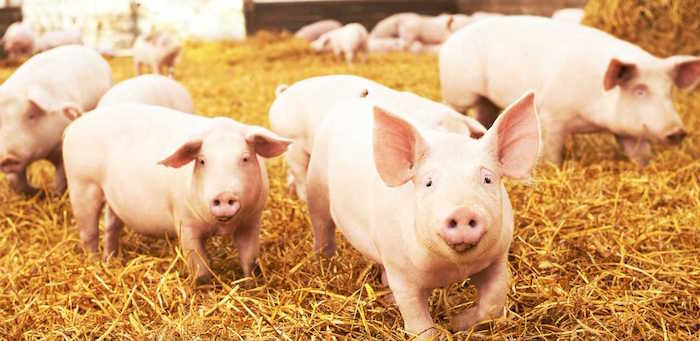Consumers would rather pay more for higher-welfare pork than for pork with a reduced climate footprint, according to a thought-provoking study by the University of Copenhagen.
Researchers from the University looked at whether consumers from Denmark, Germany, the UK and Shanghai, China are willing to pay extra, and if so, how much more, for pork products produced with various credentials.
The study, published in the scientific journal Livestock Science, demonstrates that three out of four respondents in Denmark, Germany and China, and around 60% of the British respondents would be willing to pay more for pork that is ‘improved’ in terms of better animal welfare, lower climate impact, decreased use of antibiotics use, guaranteed freedom from harmful bacteria, and animals that are not fed soy, which leads to the clearing of rainforest.
During one of the qualitative interviews included in the study, a British respondent stated: “I know Greta Thunberg is not going to like me for putting the climate further down the list, but I want happy pigs. I don’t like the idea of them being miserable and crammed together. I think there are other ways in which to help the climate issue.”
However, some issues are more important than others for European consumers. Further, there is one clear priority when they are asked to choose where they would prefer their added expense going to: Improved animal welfare.
“The answers clearly demonstrate that focusing solely on climate improvements in pork production is not what consumers care most about when buying pork. They see it as important that pigs have had a good life, and that this is more important than climate-friendly production. This applies to many consumers in Denmark, Germany and the UK,” said Professor Peter Sandøe, the study’s senior author.
Among German consumers, climate considerations scored lowest out of the five different types of improvements prioritized by the respondents. Danish, British and Chinese respondents placed climate impact at second lowest.
“In light of how much climate has occupied public debate in recent years, we were surprised that bringing down the climate footprint was given such a relatively low priority among consumers,” Associate Professor and co-author Thomas Bøker Lund added.
Make a difference for the climate
When consumers had to choose directly between animal welfare and climate, the majority of the consumers in all four countries found improved pig welfare more important than a lower climate footprint.
The researchers pointed out that there is a practical contradiction between producing more climate-friendly pork and improved animal welfare too. Indeed, a more climate-friendly pig, all other things being equal, is a more ‘efficient’ pig.
“It’s a real dilemma that maximising climate friendliness may require pushing animals on a number of other fronts. For example, the breeding of sows that give birth to more and more piglets per litter or to keep animals indoors so as to sequester more direct emissions than if they were to roam outdoors. Or to feed pigs finely ground feed, so that nothing goes to waste, but which gives them stomach ulcers. Conversely, the kinder one is with the animals, the greater the climate impact per kilo of meat,” says Prof Sandøe.
MrBøker Lund added: “If one is out there as a consumer and buying a piece of meat for dinner, you feel that you have the ability to do something for the individual pig and its welfare. But when it comes to the piece of meat’s climate impact, the connection is less clear. Many consumers do not think that they can make a real difference for the climate through their pork purchase behavior, and many prefer to do something for the climate in other ways.”
Clear message
Prod Sandøe said the results provide a clear message for both politicians and pork producers: “The study shows that the climate problem probably won’t be solved by labelling climate-friendly pork. This is not what consumers are asking for.
“And there is a very real dilemma here, because focusing entirely on climate-friendly pork production will mean compromising on animal welfare, for example, in relation to sows birthing more pigs and the animals being tightly packed into their living spaces.”
“Furthermore, relatively speaking, the vast majority of CO2 emissions from animal production stems from beef – which is why cattle must first and foremost bear the brunt when it comes to the climate problem. So, it’s a good idea to swap the beef in your Bolognese sauce out for pork or chicken. But at the same time, we need to eat less meat in general and more plant-based foods.”
Higher minimum requirements
Of the consumers who are open to spending more on pork, the majority are willing to pay up to 20% extra for the meat. But the researchers noted that you ‘don’t get much animal welfare for an additional 20% – for example, for indoor pigs, only slight improvements to the barn have been made that ‘easily costs 20% extra’.
The researchers point out that savings could be achieved at the retail level if there were not as many types of the same product beside one another in stores.
“You could consider making a national compromise, similar to the Danish one reached on a ban on caged eggs, and the Dutch one not selling meat from fast growing chickens in supermarkets. That is, where it is decided that there should only be pork in shops that meet certain animal welfare requirements. This may be the only way to go within the current framework,” says Prof Sandøe.
“In many counties mortality among piglets is sky-high and there are far too many sows that cannot withstand the production pressure as a consequence of their already being pushed so hard. So, instead of increasing production pressure yet further in the name of climate protection, we should, on the contrary, set higher minimum requirements for pig welfare and hopefully get them through at the EU level as well,” he said.




